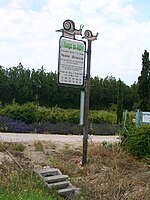
Photo from wikipedia
Abstract Smouldering wildfires in peatlands can last for weeks, resulting in the release of large amount of soil carbon and harmful emissions with detrimental effects on human health and the… Click to show full abstract
Abstract Smouldering wildfires in peatlands can last for weeks, resulting in the release of large amount of soil carbon and harmful emissions with detrimental effects on human health and the environment. Despite their importance, smouldering fires are poorly understood. An experimental study was carried out here to measure the spread rate of peat fire in detail, using infrared (IR) imaging. Peat samples with different moisture contents were prepared and burned in an open reactor of 20 × 20 cm2 cross section and 10 cm depth, under laboratory-controlled conditions. In total, twelve experiments were studied, each lasting for 8 h on average. Infrared and visual cameras were synchronised, and images were acquired at a frequency of 1/min, for the duration of the experiment. Profiles of smouldering spread on the free surface of peat were tracked using an image intensity threshold and then used to calculate the horizontal spread rate. Temporally and spatially resolved spread rates are presented and analysed. Increasing the moisture content of the peat resulted in a decrease in spread rate and the smouldering front became increasingly irregular. At high moisture contents, spread at the lower layers of peat is faster compared to top surfaces which leads to formation of overhang, and IR is able to measure the formation of the overhang and its collapse as a step increase in horizontal spread. The overhang becomes more prominent when moisture content is increased. The new tool allows the study of unprecedented details in the spread of peat fires and can be adopted in future experimental studies.
Journal Title: Combustion and Flame
Year Published: 2020
Link to full text (if available)
Share on Social Media: Sign Up to like & get
recommendations!